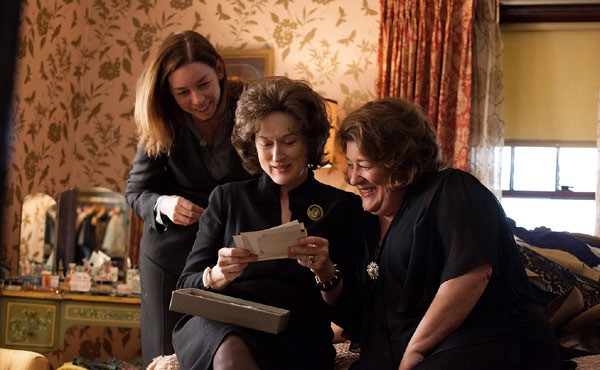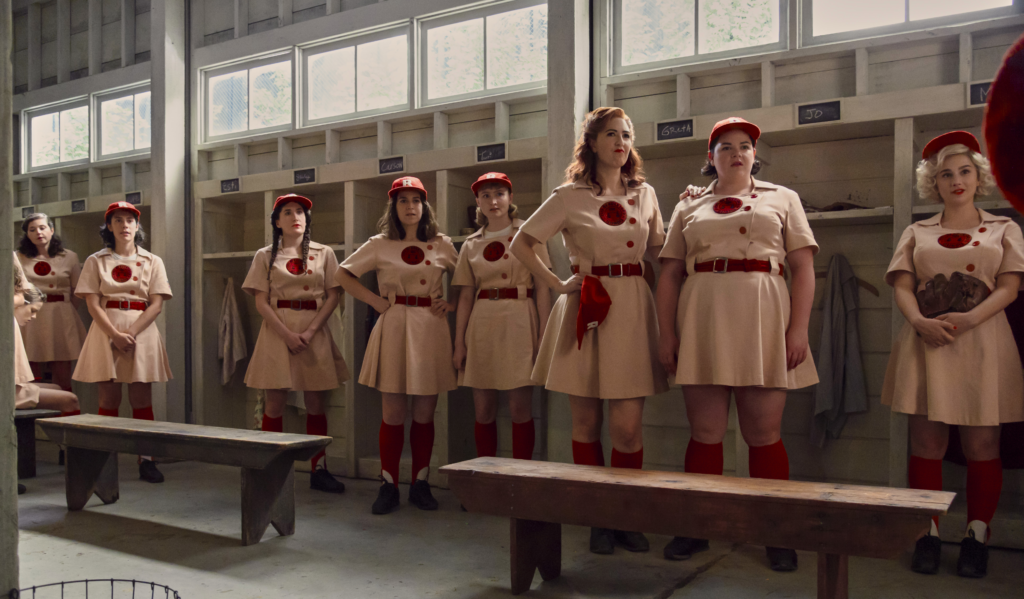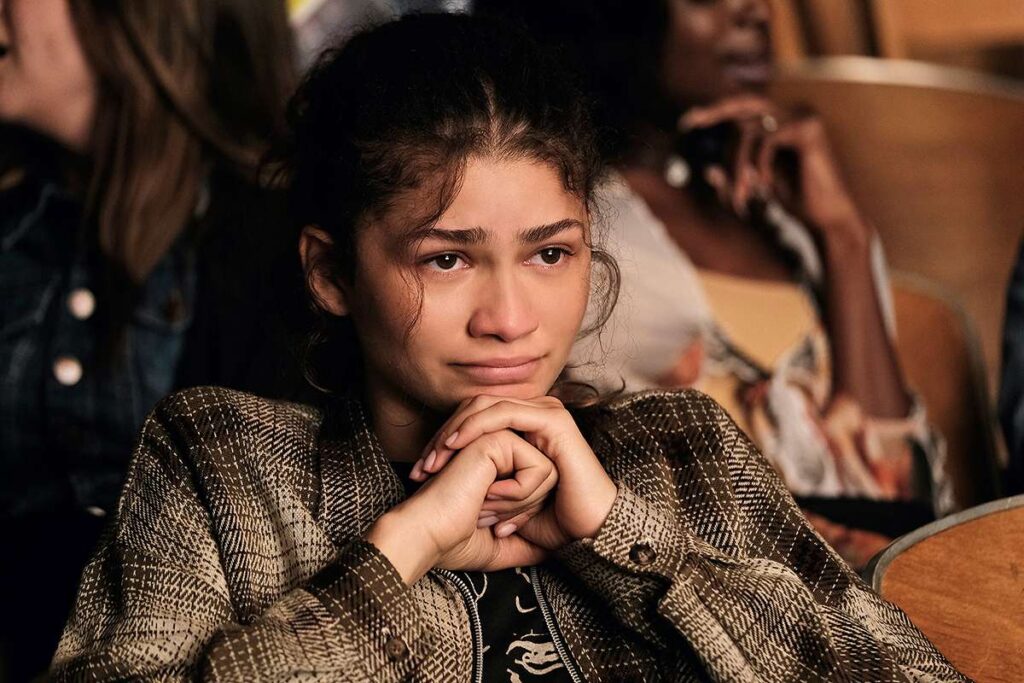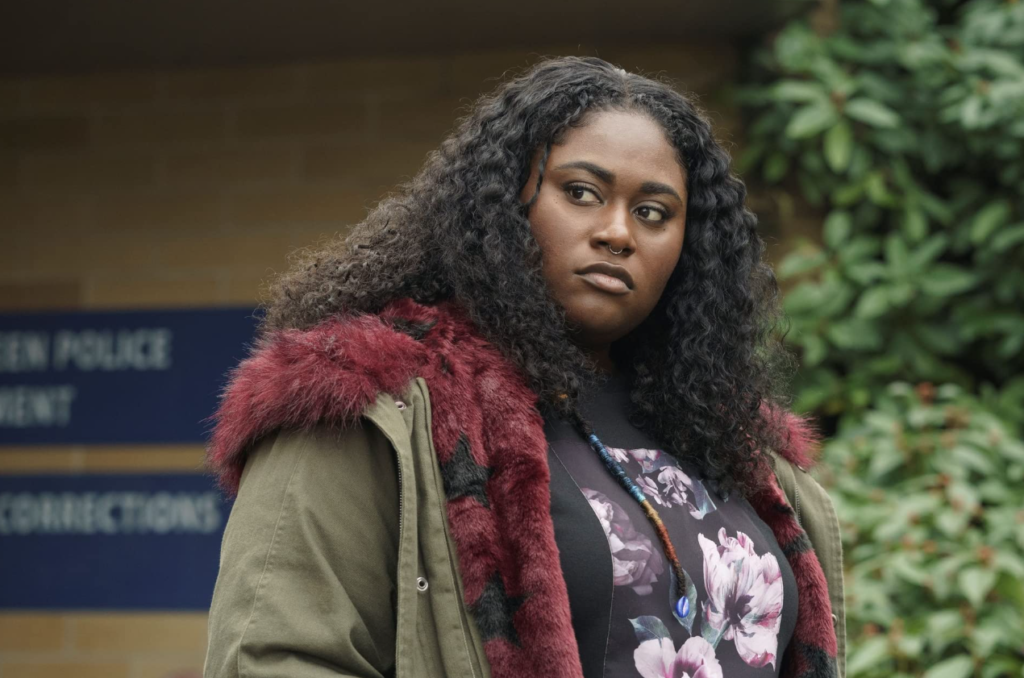What is almost over but has only just begun? The seemingly
endless race for the Oscars, of course. With the Golden Globes ceremony on
Sunday and Academy Award nominations being announced next Thursday, a solid best-picture
front-runner — most likely 12 Years a Slave, American Hustle or Gravity
— might finally materialize.
Then it’s onward to March 2, when the Oscar ceremony will at
long last take place.
Right now, the huffing and puffing over The Wolf of Wall Street, most of which accuse this true story of a
crooked stockbroker of being a three-hour glorification of non-stop, outrageously
vile male misbehavior, continues to dominate the discussion.
Some bean-counter types have even been inspired to keep a
tally of the F-words (among other vulgarisms) that pepper Wolf’s profusion of profanity. One diligent member of New York magazine’s Vulture blog counted a whopping 569
uses.
Still, such tsk-tsking over Martin Scorsese’s epic about ’90s excess
and greed hasn’t seemed to hurt either the film’s box office (closing in on $70
million) or gold potential (Wolf is up for all the major guild honors —
directing, writing and producing — save for the Screen Actors Guild).
But if there is a she-wolf equal in the mix
this year, it’s August: Osage County, which opens wide this Friday. The reverence for the 2008 Pulitzer- and Tony-winning stage version of
this raucously rancorous slice of dysfunctional-family Americana places it alongside
such classics as Who’s Afraid of Virginia Woolf? and Cat on a Hot Tin Roof.
And it’s got its fair
share of F-word-spewing to boot, many spouted by an actress formerly known as “Pretty Woman.”
Osage County is also a prime example of an ensemble cast
where the female characters monopolize the goings-on, an Oscar-friendly staple that
has been regaining favor of late after 2009’s Precious and 2011's
The Help became best-picture contenders.
But even though the darkly humorous drama’s creator Tracy
Letts excised an hour of running time while adapting his work into a movie
script, many reviewers — primarily male — have been howling over what they see
as an all-you-can-eat buffet of gluttonous scenery-chewing.
A fair number have gone to bat for the effort, welcoming the
opportunity to watch such multi-generational talents as Margo Martindale, Julia
Roberts, Abigail Breslin, Juliette Lewis and Julianne Nicholson re-examine the ugly
ghosts of family matters past and present. As Entertainment Weekly’s Owen
Gleiberman noted, “The movie is red meat for anyone who thrives on
confrontation and a certain brand of punchy, in-your-face emotional shock
value.” But even he expressed reservations: “I often enjoyed it but didn’t buy
it.”
However, the naysayers particularly have it in for the
holiest of all awards-season untouchables, Meryl Streep.
True, with her chemo-ravaged haircut and broad Oklahoma accent, the academy’s
favorite acting nominee (18 nods and counting) is at
the hysterical end of the Streep spectrum. Some have proclaimed Violet, the
drug-addicted matriarch of the combative Weston clan whose cancer-riddled mouth
is still able to spit out vicious words like angry bees at her family, her
most Oscar-baiting role in years.
“If she were a Batman villain, she would be called The
Actress,” wrote Stephanie Zacharek in The Village Voice about the star’s performance. “August:
Osage County is just too much Streep.” A.O. Scott of The New York Times declared
the film “a thespian cage match” before observing, “It goes without saying that
nobody can beat Streep at this game.”
Tom O’Neil, editor of the awards prediction site Gold Derby,
is taken aback by the tempered response to such an emotionally explosive acting
pageant: “Compared to the exalted reception it received as a stage play, I’m
shocked at how poorly it is faring among film critics (its Rotten Tomatoes
score is 64% compared to 76% for The Wolf of Wall Street) and Oscar
prognosticators.”
His theory: “I firmly believe it’s not appreciated because
of its female POV. Film criticism is
dominated by stone-hearted straight males who don’t have a clue what those gals
are brawling about, and pining for, in August: Osage County. The drama was much
more appreciated in the theater world, which has strong female attendance and a
large gay following that traditionally empathizes with female quests.”
But the cast of Osage County is feeling the love from two sources especially important at this time of year: the ticket-buying public
and fellow actors. After a Dec. 27 limited opening on five screens in New York
and L.A., the film has made a healthy $500,000. The Weinstein Co., which is
releasing the title, has loudly publicized the film’s A-minus
Cinemascore ranking from paying moviegoers and the “through the roof” initial
exit polls.
The real test will be whether the rest of the country beyond
the two coasts crawl out from January’s deep freeze this weekend to be warmed
by the heat from Roberts and Streep’s titanic dinner-table brawl, a volcanic eruption
of foul language and physical abuse that has to be witnessed to be believed.
And history has
proven that the academy’s acting branch is a sucker for a great ensemble cast.
While the movie itself has been pretty much a non-starter as a best-picture
possibility, the cast is in contention for both SAG’s and the Broadcast Film
Critics Association’s ensemble prize after earning a similar honor at
the Hollywood Film Festival. Streep (as lead) and Roberts (as supporting) are also competing separately at the Golden Globes, SAG and the Broadcast Film Critics awards as
well.
It’s true that Oscar — and Hollywood — has blown hot and
cold on female-heavy movies over the years. Two titles considered among
the femme de la creme of actress ensembles weren’t even nominated for best film
in their day. The Women, headlined by Joan Crawford and Norma Shearer, scored a
bonanza at the box office but had the bad luck of opening in 1939 — long
considered a golden year for Hollywood releases with Gone With the Wind
and The Wizard of Oz in the lineup.
Steel Magnolias, that
irresistible parade of Southern female archetypes, was left out of the mix in
1989, most likely deemed too commercial to go the awards route. But Roberts — then playing Sally Fields’ luminous, ailing daughter — scored her first of
three Oscar nominations in a supporting role.
When vehicles carrying a load of ladies have managed to
crash the best-picture category, such as 1933’s Little Women and 1937’s Stage
Door (both with Katharine Hepburn), or actually took home the best-picture
trophy, such as 1950’s All About Eve or 2002’s Chicago, it was primarily
because of their immense appeal to the actors among the academy’s membership.
And it’s in the acting categories where these prove the
strongest. Gone With the Wind, a rare, war-themed film centered around female
interests, earned Vivien Leigh an Oscar in the lead and provided the Academy a chance to make history by giving the best supporting actress prize to Hattie McDaniel, the first
African-American to be nominated for an Oscar and to win.
But many female ensemble pieces granted a
boatload of Oscar chances — such as The Turning Point in 1977 and The Color
Purple in 1985, both nominated in 11 categories — that came away empty-handed
have gone on to be classics of their kind.
Tom O’Neill suggests the voters should not write off August:
Osage County if they want to increase the number of opportunities for actresses
to strut their stuff during awards season. Consider what he learned after
talking to Scorsese recently, who has not done a female-driven film since
1974’s Alice Doesn’t Live Here Anymore, which kick-started Ellen Burstyn’s
movie career with an Oscar win in the title role.
“I asked Scorsese if he would ever do another movie from a
female point of view,” he says. “He looked startled by the question judging by
the look on his face, as if he hadn’t even thought about it.”







